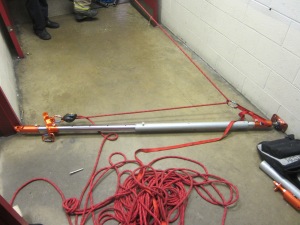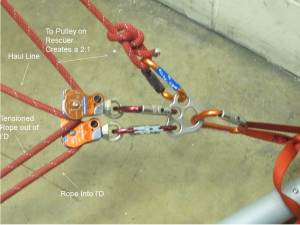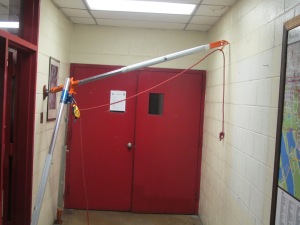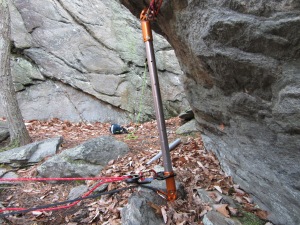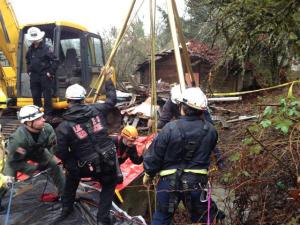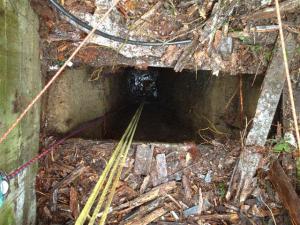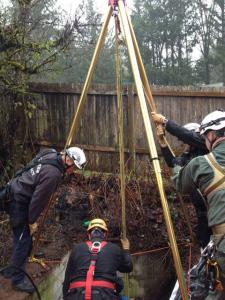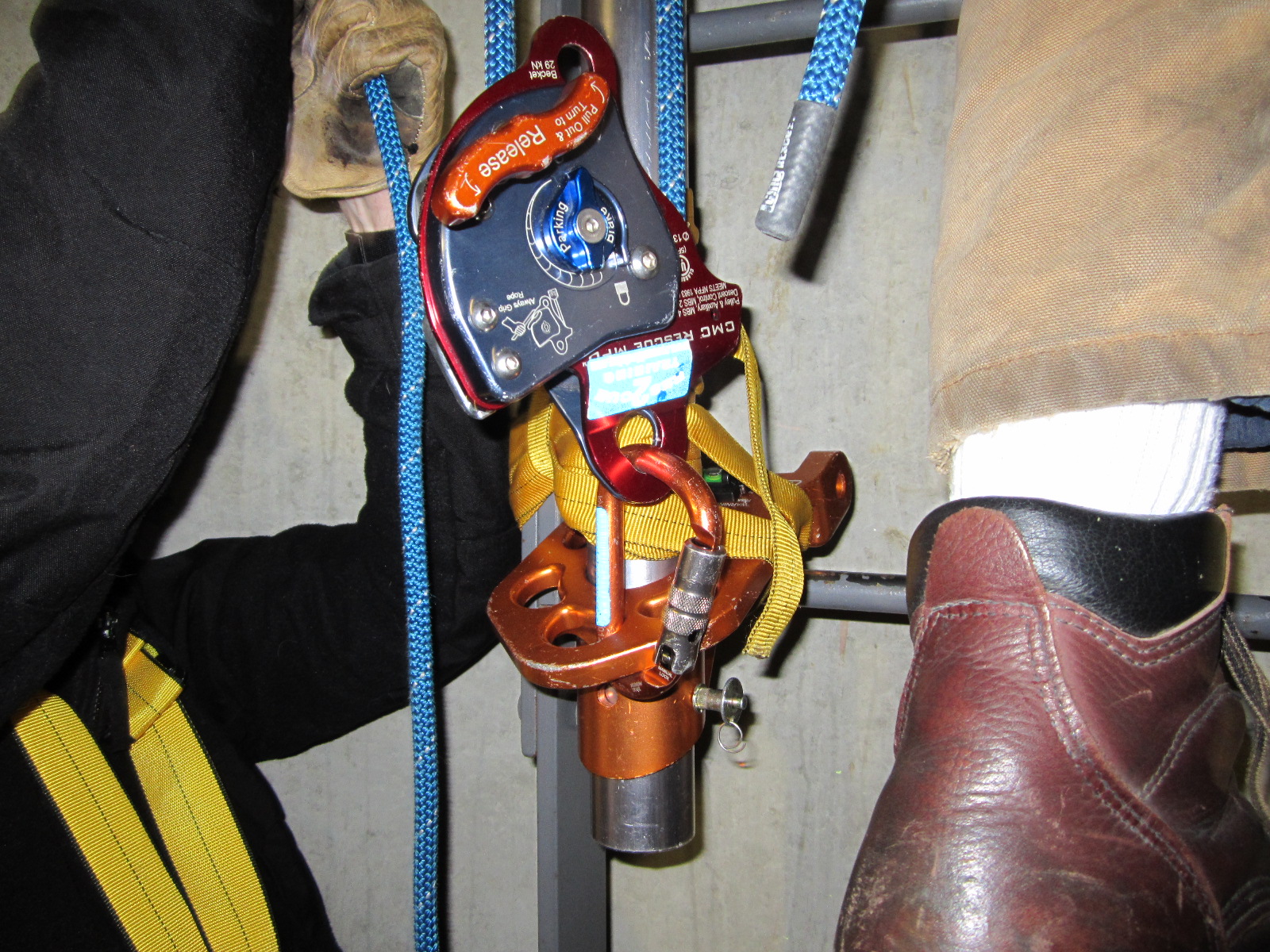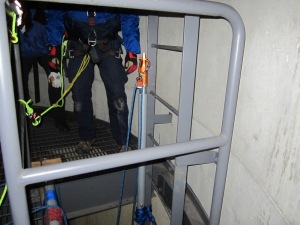While the Arizona Vortex is usually thought of as an industrial and wilderness rescue piece of equipment, it’s no secret that I think its full potential as a tool for the urban rescuer has not been fully explored. With that in mind, we are constantly trying (occasionally failing) to find out how to best use this tool to our advantage. We’ve been working on different configurations of the Appalachian Wedge Pole (AWP) lately.
The first and perhaps the most useful version of the Wedge Pole is used to create anchors in a hallway where others might not exist. While no permanent name has been found yet, and because it appears to be bombproof, we’ve been calling it the Atomic Wedge Pole. Or Atomic Wedgie for short. As in: “Hey give him an Atomic Wedgie quickly, so we can get on with this rope rescue. ” But again, no permanent name yet.
Below are some pictures we took during the discovery phase of these anchors, a scale model so to speak. They were loaded with a couple of guys giving it all they had, leaning into the load line. It was an initial test to see if the anchors would move at all. The next step in the process will be to load these with a one person load and operate a raising and lowering system. Then on to a two person load.
A slightly more complex version that allows for a longer haul field that runs toward the edge.
Some techniques might be setups in search of an application, the picture below being one such example. I envision using this above a hole in a hallway, where there are no other anchors present. This might be more of an industrial confined space setup, but it’s neat to see in action.
These pictures above are of urban usage, but we developed the technique out on the rocks. Here are two pictures of the first AWP setups, one horizontal and one vertical, from when the idea first struck.
This last picture comes to us from the men of Group 2 on Rescue 1 with the Boston Fire Department. They constructed an Appalachian Lean-To and changed the direction of the haul line 90 degrees at the head resting on the floor. To counteract the resultant force that wants to lift the left leg away from the wall, they front tied the setup to an anchor spanning the doorway with two AZTEKs, one of which is doing the job of keeping that left leg in compression when it naturally wants to pull away from the wall because of the COD on the head. Good job guys!

